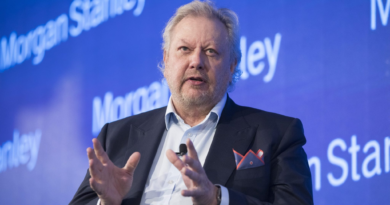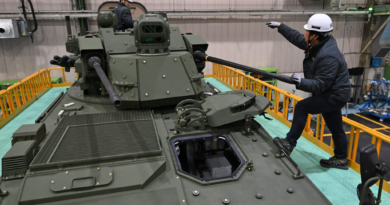This jobseeker made a ‘Desperate’ LinkedIn banner to counter taboo of the ‘Open to work’ flag
Instead of pandering to an illusion that groceries, phone bills and rent will magically pay for themselves, Courtney Summer Myers decided to be upfront about her need to earn a living.
The British 28-year-old graphic designer was laid off in November—the second time in her six-year career that she had been summoned onto an impromptu Slack call and made redundant.
After applying for approximately 30 jobs a day in the ten months since, Myers decided last week it was time to throw down the gauntlet.
The University of Portsmouth alumni created her own LinkedIn banner: bright pink with #DESPERATE emblazoned across it, displayed beneath her profile photo.
Her idea is based on other banners made available by the professional social networking site, like ‘Hiring’ and ‘Open To Work.’
However, according to employment experts, the latter banner raises a red flag.
Recruiters recently told Fortune potential employers will take advantage of panicking individuals and lowball them with salaries, or be concerned that the candidate is applying for a raft of jobs instead of roles they’re truly suited for.
Myers disagrees, saying the banner is just common sense.
She explained: “LinkedIn is a platform that’s made for networking and connecting with people, and we do that because it’s going to help us out in some way. So if you’re in need, why would you not ask for help?”
Why be ashamed of looking for work?
Myers highlights that for the majority of the population, needing to work to earn a living is completely normal—so why be embarrassed about it?
“If I sit there and pretend that everything is fine, how is anyone going to know that I need a job or some freelance work? How would they know I need help in general, even just a chat? People aren’t psychic,” she added.
“Why be ashamed of a situation that you’ve been forced into?”
The reaction to Myers’s original post has garnered both support and cutting criticism—some suggesting it’s time for her to start over.
But having devoted the best part of a decade investing in a degree and a career in graphic design—as well as having a roster of high-profile campaigns under her belt—Myers questions whether individuals in other industries would be subject to the same advice.
Myers previously worked for Regent Street toy store Hamleys in London, dreaming up schemes for Mattel and Disney products. She questioned: “Would they say that to a CEO who’s been made redundant? Is it just because it’s a more creative role that they think it’s OK to say that?”
Desperate doesn’t mean delusional
In Glasgow, Scotland, 22-year-old Hanna McFadyen also has the fluorescent banner displayed on her page.
McFadyen, an illustrator and designer who came across Myers’s post thanks to their common network, left her remote role in April because she wanted to spend more time in-office learning from colleagues.
Given the commonality between careers of those using the #Desperate banner, it might be easy to assume that the nature of the individuals’ roles presents a problem—as opposed to the networks of the trio overlapping.
Studies have shown this is unlikely to be the case. For example in 2022 student review site Eduopinions analyzed feedback from thousands of students to establish which degrees had the worst job prospects.
Media studies, European studies, psychology, international relations and civil engineering makes the list—design does not.
But McFadyen is now applying for 20 jobs a day, as well as spending hours on interview tasks for hiring companies that never respond.
When she does get feedback her work is complimented—but is told she’s been pipped by a candidate with more experience.
The 2023 graduate doesn’t want much from her job hunt as she’s aware she’s in the early days of a career.
She told Fortune she’s simply after a role in which she can learn from peers, and a salary that will cover her living expenses under her parents’ roof, such as the cost of running her car.
“I wouldn’t want to go under what I was earning previously,” McFadyen tells Fortune in a phone interview. “We’re still confident enough to tell recruiters: ‘Listen, we know we’re desperate, but we’re not going to be played around with because of that label.
“A lot of companies don’t even state the salary on the job applications. I live at home with my parents, but I could very well have a flat and rent to pay. I’ve got cell bills to cover, so I could be in a situation where I really need to know the salary—the fact that they don’t state it leaves you in the dark.”
Going global
Myers’s original post sharing her #Desperate banner has now amassed more than 338,000 likes on LinkedIn, and more than 7,000 comments.
The global phenomenon has seen Barcelona-based Elena Carballo, for example, use the banner and receive messages of support from people across the U.S., Canada, Taiwan, and India.
29-year-old Carballo lost her job with an agency a year ago and, per Spanish state benefit rules, has slowly seen her payments reduce month after month. Living with her mother and sister, Carballo is still paying a significant chunk of her family’s bills.
As a UX design specialist, Carballo said she’s never been in this situation before, telling Fortune: “When I saw Courtney’s post, it was like she read my mind.
“LinkedIn was created for people to … find work. But it doesn’t make sense that recruiters and headhunters don’t talk to you if you put an [#OpenToWork] banner up. It’s paradoxical.”
Like Myers, Carballo has been advised by friends to end her search for a fulfilling role and instead apply for jobs in supermarkets and clothes shops.
The Masters graduate countered: “I studied further because I love this profession—I know that I’m good because I’ve always had work. I chose this profession when I was young because I’m creative—it’s part of me.”



